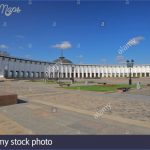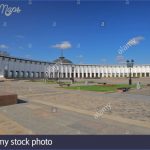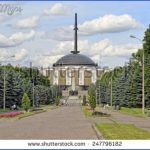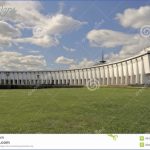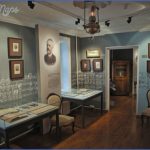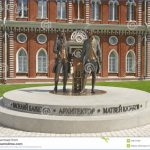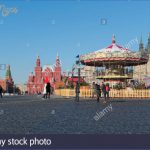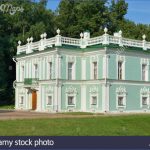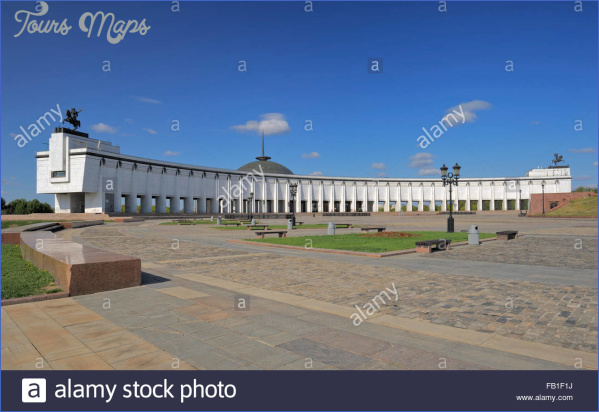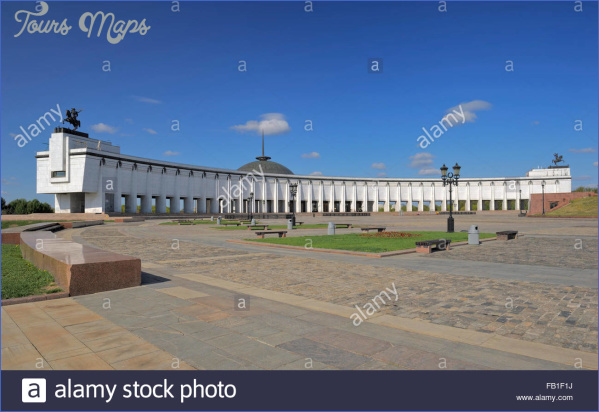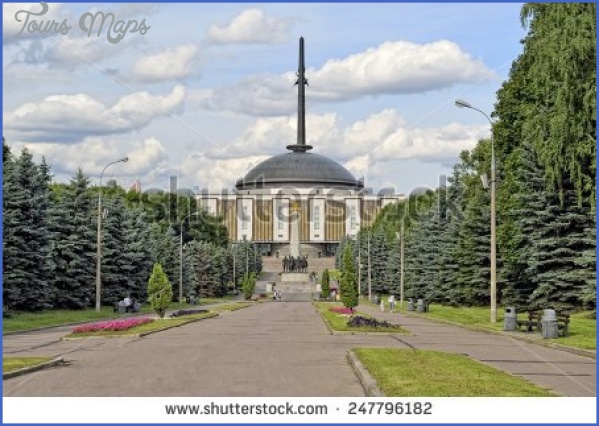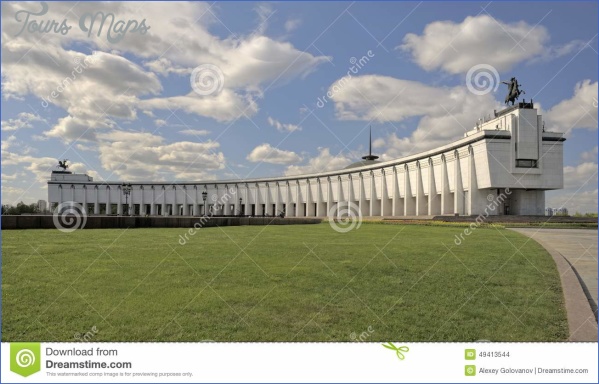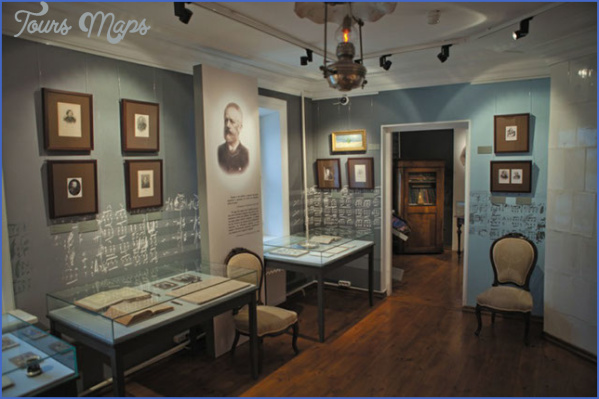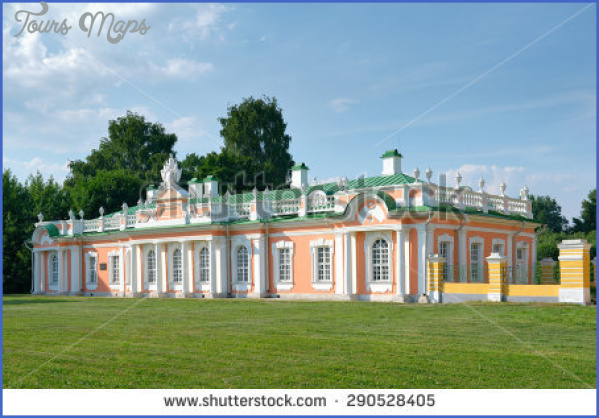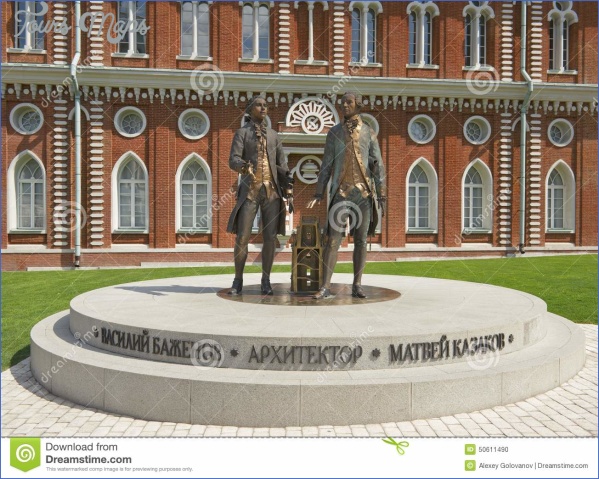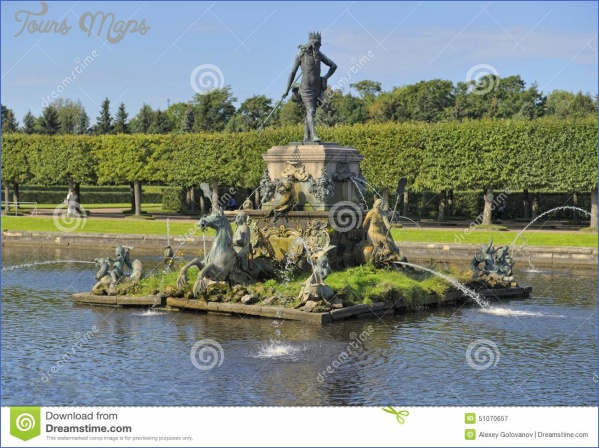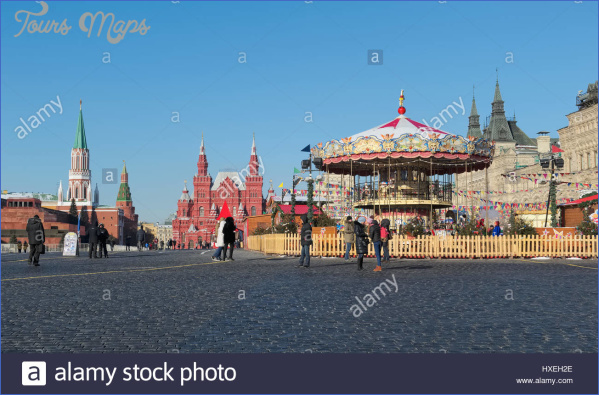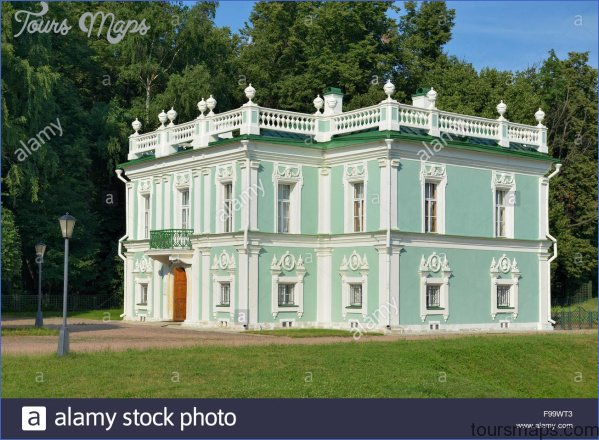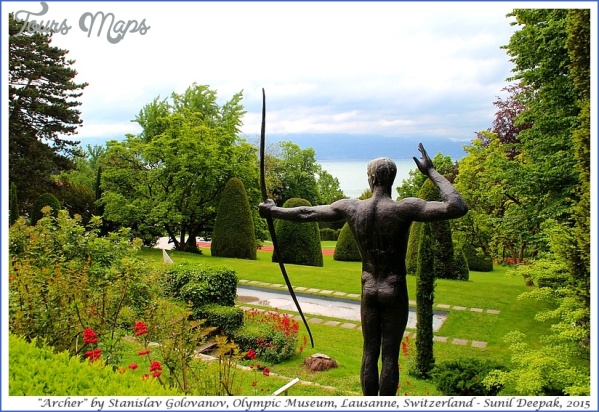GOLOVANOV MUSEUM
The central Moscow flat of Nikolay Semyonovich Golovanov (b 1891), an eminent Soviet-era conductor and composer, is not just a musician’s living quarters but a miniature art museum, filled with his superb collection of paintings by Russian artists, sculpture, furniture and other objets d’art. Two grand pianos, a Bluthner and a Bechstein, occupy much of the large double room, but they have to compete with splendid portraits by Zakharov and Golovin respectively of Golovanov and Skryabin (whose music Golovanov championed, along with Rakhmaninov’s), a large and arresting plaster bust by Trubetskoy of Pushkin, Dubovsky’s impressionist view of Red Square at twilight, Yuon’s winter view of the Sergyev Posad monastery and a copy of a Botticelli fresco, as well as smaller busts of himself and some of his heroes, including Dante, Liszt, Wagner and Tchaikovsky.
In the adjoining former dining-room (today the museum reading-room) are a number of antiquities, including a sculpted Pharaoh’s head of the 2nd millennium BC, as well as paintings by Russian artists of Venice (one of the Vendramin Palace, where Wagner died) and the Taj Mahal and an imposing bronze bust by Aronson of Tolstoy. Decorating all the natural wood interior doors of the flat is an eclectic array of delicate brass ornaments, rescued by Golovanov during World War II from a cart taking them to be melted down. The furniture, much of it highly decorated with marquetry and gilded ornaments, is arranged as in Golovanov’s time.
GOLOVANOV MUSEUM Photo Gallery
His music manuscripts (including an opera, a symphony and symphonic poem, piano music, songs and folksong arrangements as well as sacred choral music), richly annotated conducting scores and papers are still kept in the flat and are available for study. Only the composer’s superb collection of more than 100 icons has been removed; that is displayed at the Old Tretyakov Gallery in Moscow.
Golovanov lived in the fifth-floor flat with his wife, the soprano Antonina Nezhdanova, from 1935 until his death on 28 August 1953. During this period he was conducting at the Bol’shoy Theatre, where he was an admired interpreter of Russian operas, the Moscow Broadcasting Centre and the Stanislavsky Opera Theatre, and teaching at the Moscow Conservatory. The flat became a gathering-place for Golovanov’s friends. In 1968 it was designated a memorial place by the USSR Ministry of Culture, then in 1971 upgraded to a state museum before finally opening to the public in 1974 as a branch of the Glinka State Central Museum of Musical Culture. Rare recordings of Golovanov’s own music – especially his sacred choral works, which were suppressed during the Soviet era – and music that he conducted are played for visitors, and music seminars are held once a month.
There is a relief plaque on the front of the building. Golovanov is buried in the Novodyevichi Cemetery in south-west Moscow.
Maybe You Like Them Too
- Top 10 Islands You Can Buy
- Top 10 Underrated Asian Cities 2023
- Top 10 Reasons Upsizing Will Be a Huge Travel Trend
- Top 10 Scuba Diving Destinations
- World’s 10 Best Places To Visit

